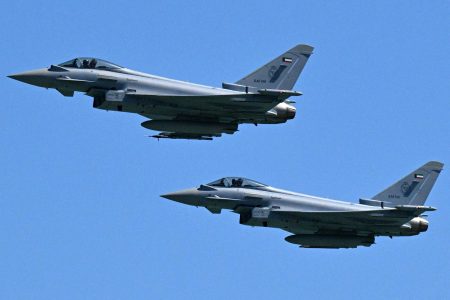Six NATO countries neighboring Russia are collaborating to build a “drone wall” to enhance border security. Lithuania’s Interior Minister Agne Bilotaite announced plans for the project, which will stretch from Norway to Poland. The initiative will utilize drones and other technologies to protect borders against provocations and prevent smuggling. The participating countries include Lithuania, Latvia, Estonia, Poland, Finland, and Norway. While details such as funding, timeline, and technical aspects have not been disclosed, potential EU funds may play a role in supporting the project.
Finland, which joined NATO in 2023, shares an 832-mile border with Russia and is part of the drone wall initiative. Finland’s Interior Minister Mari Rantanen expressed confidence that the plan would improve over time. The six countries involved in the project convened in Riga, Latvia to discuss security threats and non-military tactics like instrumentalized migration, a tactic used by Russia or Belarus to send undocumented asylum seekers over their borders from Africa and the Middle East. Rantanen highlighted the importance of effective strategies to address such situations and the need for EU-level solutions to combat this phenomenon.
The objectives of the drone wall project extend beyond physical infrastructure and surveillance systems to incorporate emerging technologies for border protection. The collaborative effort among the six NATO countries reflects a proactive approach to address security challenges and enhance coordination against potential threats. By leveraging drones and other innovations, the countries aim to counter provocations and safeguard their borders more effectively. The project signifies a collective commitment to strengthening border security in the face of evolving security threats and geopolitical complexities.
The meeting in Riga underscored the importance of cooperation and coordination among the participating countries to effectively address security challenges. Discussions at the event emphasized the shared goal of countering instrumentalized migration as a tactic used to exert pressure on the countries involved. The collaborative efforts to address common challenges and find EU-level solutions demonstrate a commitment to enhancing security measures and responding to dynamic security threats. By working together, the countries aim to create a more secure environment and deter potential provocations along their borders.
While specific details about the drone wall project remain unclear, the commitment of the six NATO countries to enhance border security through technological advancements is evident. The use of drones and other technologies underscores a shift towards more sophisticated approaches to border protection and surveillance. Leveraging EU funds and collective efforts, the participating countries seek to strengthen their defenses against potential threats and enhance their ability to respond to security challenges effectively. The drone wall initiative highlights a strategic partnership aimed at bolstering security measures and safeguarding borders against evolving risks and provocations.















